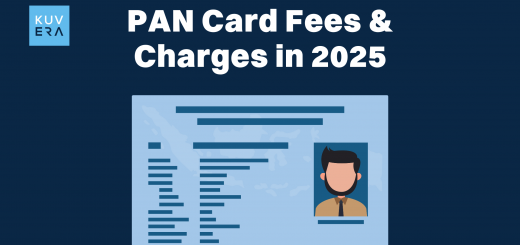Investing is both an art and a science, requiring a mix of rational analysis and emotional control. However, even the most seasoned investors fall prey to behavioural biases that cloud their judgment.
This April Fool’s Day, let us examine how different types of investors such as new investors, experienced investors, very young investors, and elderly investors succumb to various biases, and how they can safeguard their wealth from these pitfalls.
1. Biases Affecting New Investors
If you are a new investor, then you must beware of various cognitive biases that generally affect investment decisions of new investors when they step into the market with more enthusiasm and less knowledge.
Here are the most common cognitive biases:
a. Confirmation Bias
New investors tend to seek information that supports their existing beliefs and ignore contradictory data. For example, if they believe a particular stock is destined to perform well, they may only read positive news and disregard negative reports, leading to a skewed perspective.
b. Overconfidence Bias
A few initial wins may make new investors believe they possess exceptional market insight. Overestimating their ability to predict price movements can lead to reckless trading and poor risk management.
c. Herd Mentality
New investors often follow the crowd, buying stocks that are trending on social media or among peers without conducting proper research. This can lead to investing at inflated prices and suffering losses when the bubble bursts.
d. Loss Aversion
Many new investors are overly fearful of losses, sometimes selling promising investments too soon or hesitating to cut losses on underperforming assets. This emotional attachment to money can prevent them from making rational investment decisions.
2. Biases Affecting Experienced Investors
While experience brings wisdom, it can also reinforce behavioural tendencies that hinder optimal decision-making. Seasoned investors should be wary of the following biases:
a. Anchoring Bias
Experienced investors may fixate on past price points or historical valuation metrics when assessing an investment. If they once saw a stock trading at a lower price, they may resist buying at current levels, even if market conditions justify the increase.
b. Familiarity Bias
Long-term investors often prefer stocks they are familiar with—perhaps from their own industry or companies they have invested in previously—at the cost of diversifying into unfamiliar yet potentially lucrative opportunities.
c. Endowment Effect
This bias occurs when investors overvalue their existing holdings simply because they own them. They may hold onto underperforming stocks longer than necessary instead of reallocating capital to better opportunities.
d. Recency Bias
Experienced investors may place too much emphasis on recent market trends and ignore long-term fundamentals. For instance, a period of strong market performance might lead them to assume that the bullish trend will continue indefinitely.
3. Biases Affecting Very Young Investors
With the rise of technology and social media, young investors are entering the market at a rapid pace. While they bring fresh perspectives, they also exhibit specific biases:
a. Impulsivity Bias
Young investors, influenced by fast-paced digital platforms, tend to make snap investment decisions without thorough analysis. This can lead to speculative trading rather than disciplined investing.
b. Social Media Influence
With financial influencers and social media ‘gurus’ promoting stocks and cryptocurrencies, young investors are often swayed by hype rather than fundamentals. This can lead to investing in highly volatile or even fraudulent schemes.
c. Short-Termism
Many young investors focus on immediate returns rather than long-term wealth creation. The allure of quick profits can lead them to avoid traditional asset classes like mutual funds or bonds, which provide stability.
d. Illusion of Control
With easy access to online trading platforms, young investors may believe they have greater control over market outcomes than they actually do. This overestimation of influence can lead to excessive trading and unnecessary risk-taking.
4. Biases Affecting Elderly Investors
As investors age, their financial priorities shift towards wealth preservation. However, this transition comes with its own set of biases:
a. Conservatism Bias
Older investors may be too risk-averse, avoiding equity investments altogether. While capital preservation is important, being overly conservative can erode purchasing power due to inflation.
b. Status Quo Bias
Some elderly investors prefer to stick with what they know, resisting portfolio rebalancing or diversification. This bias may result in suboptimal asset allocation, limiting overall returns.
c. Regret/Loss Aversion
Fear of making the wrong investment decision can lead to inaction. Elderly investors may delay necessary financial moves, such as reallocating funds or estate planning, due to past mistakes or fears of loss.
d. Longevity Risk Underestimation
Many retirees underestimate their life expectancy, leading to premature withdrawal of retirement funds or insufficient long-term planning. This bias can create financial difficulties in later years.
How to Overcome Investment Biases
Regardless of your experience level, understanding and mitigating biases can enhance investment decision-making. Here’s how:
1. Maintain an Investment Plan
A well-structured investment strategy, aligned with financial goals and risk tolerance, helps counteract impulsive decisions driven by emotions or external influences.
2. Diversify Your Portfolio
Investing across asset classes and industries reduces exposure to specific risks and minimises the impact of biases such as familiarity bias or overconfidence.
3. Seek Professional Advice
Consulting with a financial adviser can provide an objective perspective, helping investors avoid common pitfalls and make more informed choices.
4. Review and Reassess Regularly
Periodic portfolio evaluations ensure investments remain aligned with financial goals. Rebalancing can help prevent biases like status quo bias or endowment effect from creeping in.
5. Educate Yourself Continuously
The investment landscape is ever-changing. Staying informed through credible sources enhances awareness and helps counteract biases influenced by trends or misinformation.
Wrapping Up!
Investment biases can deceive even the most prudent investors, leading to costly mistakes. You can enhance their financial decision-making and achieve their respective financial goals by recognising and addressing these psychological pitfalls, retail investors: whether new, experienced, young, or elderly. This April Fool’s Day, do not let biases play tricks on you—stay rational, informed, and strategic in your investment journey!
Interested in how we think about the markets?
Read more: Zen And The Art Of Investing
Watch here: Is UPI Killing the Toffee Business?












